Species of Interest
The Aquatic Diagnostic Laboratory has research and diagnostic interests in a wide variety of aquatic species, including shellfish, crustaceans, ornamental fish, and marine and freshwater finfish.
Shellfish Species of Interest
Include but are not limited to Eastern Oysters (Crassostrea virginica) Quahogs/Clams (Mercenaria mercenaria) Bay Scallops (Argopecten irradians).

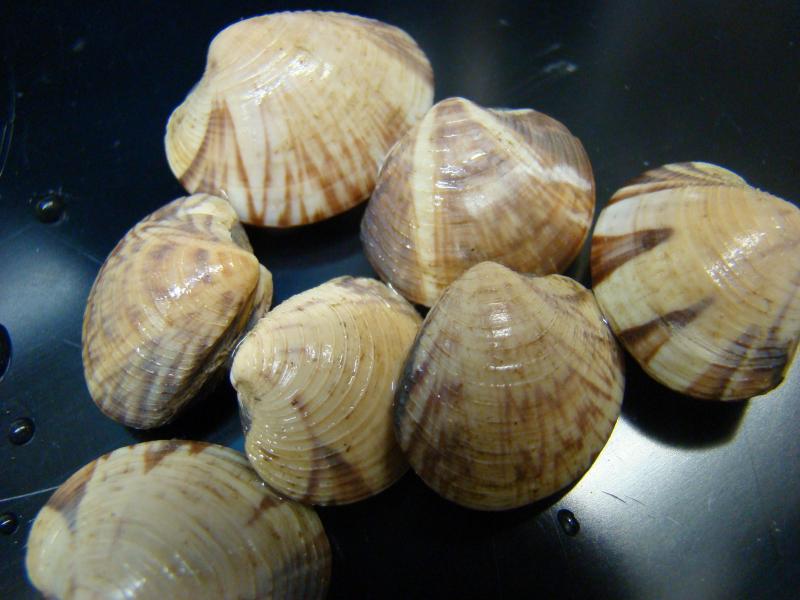
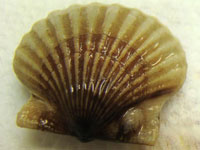
Eastern Oyster, Crassostrea virginica
Common name: Eastern oyster
Latin name: Crassostrea virginica
Average Lifespan: up to 20 years 4
Habitat: set onto rocks, other structures4
Diet: Filter feeder
Geographical range: Canada to Brazil, Atlantic Coast3,4
Salinity and Temperature range: 10-28ppt salinity and -1 to 36 °C 2
General Information: Oyster beds are a good habitat for other organisms1. Newly settled juveniles are called “spat”.2 Widely cultivated for food and restoration purposes.3
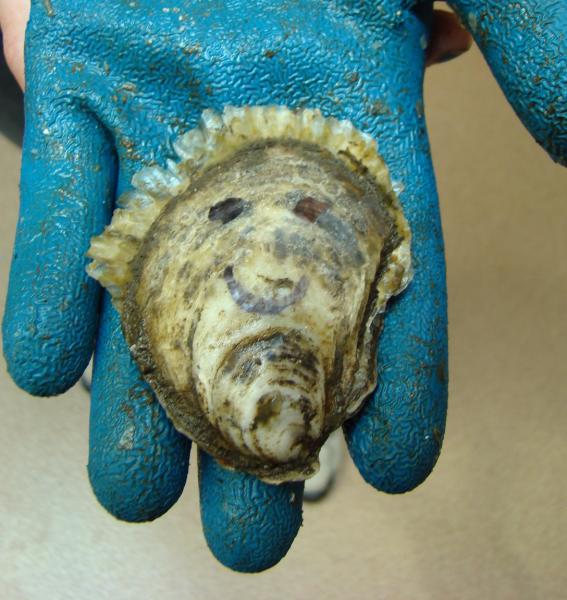
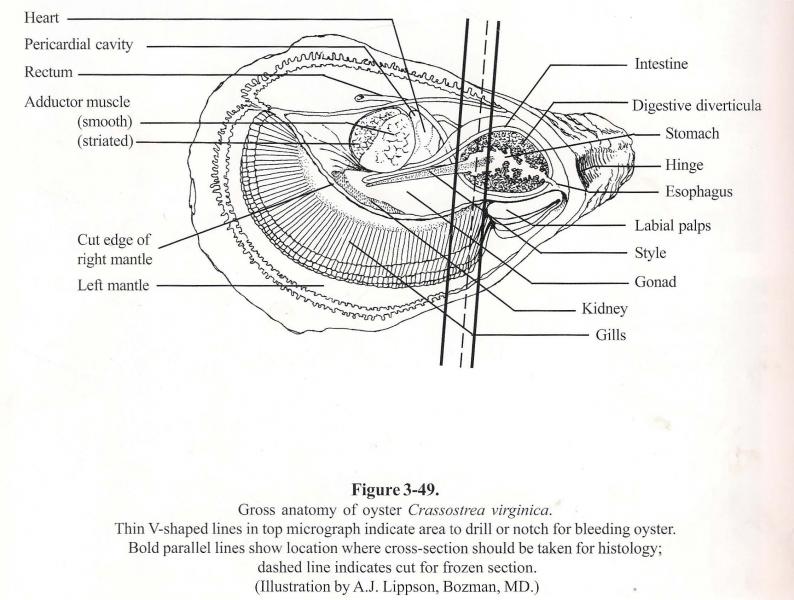
Howard DW, Lewis EJ, Keller BJ, et al. Histological Techniques for Marine Bivalve Mollusks and Crustaceans. NOAA Technical Memorandum NOS NCCOS 5. Washington, DC: National Oceanic and Atmospheric Administration; 2004.
Quahog, Mercenaria mercenaria
Common name: Quahog, Hard clam
Latin name: Mercenaria mercenaria
Average Lifespan: 12-20 years, can live up to 40 years4
Habitat: Intertidal and subtidal zone, burrows into sandy/muddy sediment1,5
Diet: Filter feeder2
Geographical range: Canada to Gulf Coast of Texas along the Atlantic Coast6
Salinity and Temperature range: 20-35ppt1 (as low as 10ppt for short periods of time6), 18-25°C8
General Information: Clams grow to a commercial size within 2-5 years, depending on water quality and food resources. They become sexually mature at 2-3 years. There are different size classes, classified by the length of the shell: Seed clams: < 1"; Beans: 1.0 - 1.5 "; Buttons: 1.5 - 2.0"; Littlenecks: 2.0 - 2.5"; Topnecks: 2.5 - 3.0"; Cherrystones: 3.0 - 4.0"; Chowders: >4.0".6Through investigation of growth lines in ancient clam fossils, it was found that 500mya there were two more days per month then there are now, showing that the Earth is gradually slowing its rotation around the sun.9 Quahog shells have also been used as Native American currency, known as wampum. Wampum beads are used in jewelry.

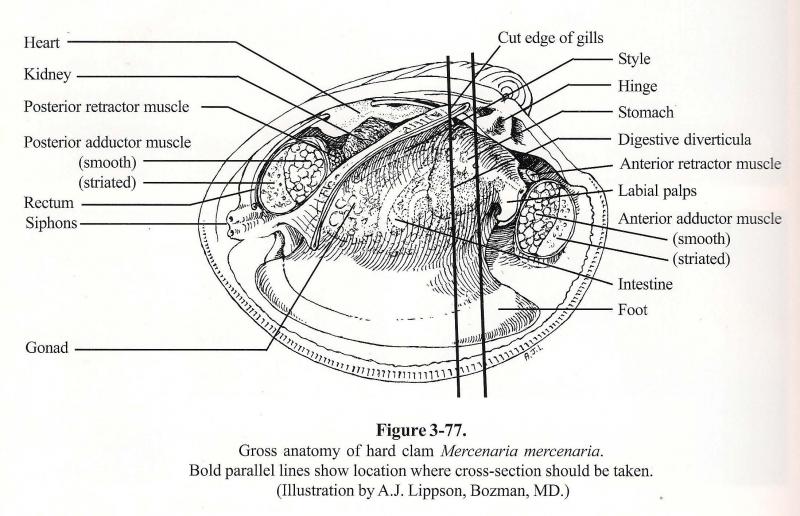
Howard DW, Lewis EJ, Keller BJ, et al. Histological Techniques for Marine Bivalve Mollusks and Crustaceans. NOAA Technical Memorandum NOS NCCOS 5. Washington, DC: National Oceanic and Atmospheric Administration; 2004.
Soft Shell Clam, Mya arenaria
Common name: Soft Shell Clam
Latin name: Mya arenaria
Average Lifespan: 10-12 years
Habitat: Soft sediments2
Diet: Filter feeder1
Geographical range: Canada to Southern USA on the Pacific and Atlantic Coasts4,6
Salinity and Temperature range: 5-30ppt (can survive in estuaries1), 4-25°C4
General Information: Shells are made from calcium carbonate, which is softer than the hard shell clam. This does not mean that their shells are as malleable as rubber, but the calcium carbonate is easier for some predators to drill through. Unlike other bivalves, the soft shelled clam cannot completely retract their siphons into their shells.3 They can survive without oxygen for several days, using its shell as an alkaline reserve to neutralize harmful byproducts of anaerobic metabolism.5
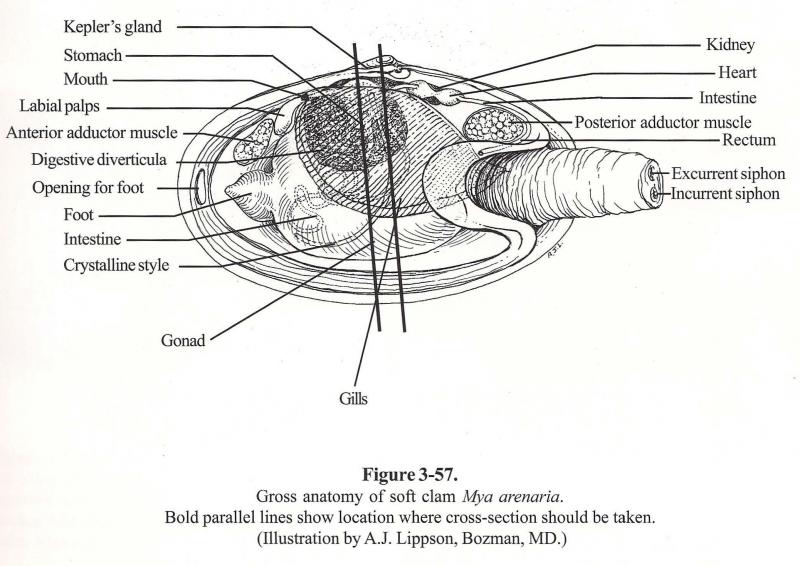
Howard DW, Lewis EJ, Keller BJ, et al. Histological Techniques for Marine Bivalve Mollusks and Crustaceans. NOAA Technical Memorandum NOS NCCOS 5. Washington, DC: National Oceanic and Atmospheric Administration; 2004.
Bay Scallop, Argopecten irradiens
Common name: Bay Scallop
Latin name: Argopecten irradiens
Average Lifespan: 1-3 years1
Habitat: Moves freely along the seafloor, subtidal zone1
Diet: Filter feeder Geographical range: Massachusetts to Texas2
Salinity and Temperature range: Best around 20 °C, 20-30 ppt3
General Information: Bay scallop shells can exhibit a wide variety of colors. There are many blue eyes along the edge of the mantle.1

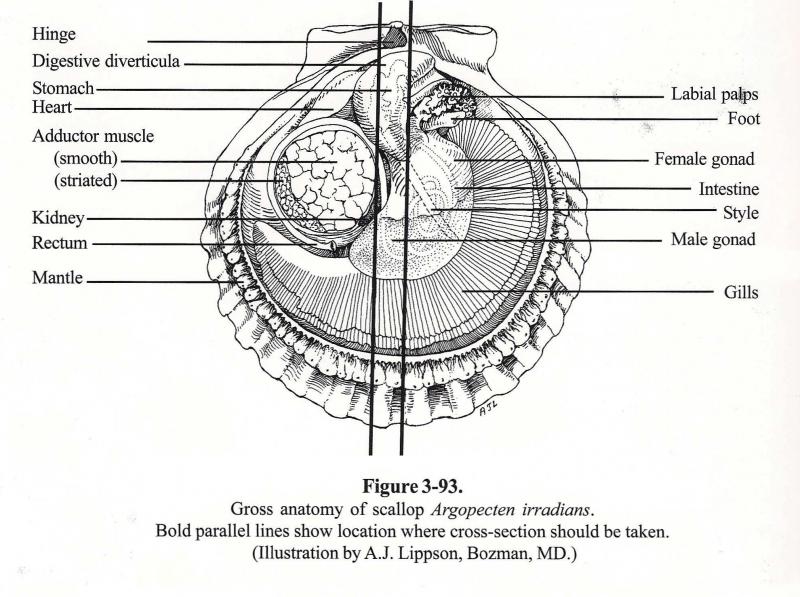
Howard DW, Lewis EJ, Keller BJ, et al. Histological Techniques for Marine Bivalve Mollusks and Crustaceans. NOAA Technical Memorandum NOS NCCOS 5. Washington, DC: National Oceanic and Atmospheric Administration; 2004.
Sea Scallop, Placopecten magellanicus
Common name: Sea Scallop
Latin name: Placopecten magellanicus
Average Lifespan: 6-8 years
Habitat: Live in the deep sea (20-200m)2
Diet: Filter feeder Geographical range: Canada to North Carolina, Atlantic Coast3
Salinity and Temperature range: 15-25 ppt (Juveniles >25ppt, adult ideal is 16.5ppt), Optimum temp is 10°C.1
General Information: Sea Scallops are gonochoristic (animals are separate sexes), unlike Bay Scallops, which are hermaphroditic.
Blue Mussel, Mytilus edulis
Common name: Blue Mussel
Latin name: Mytilus edulis
Average Lifespan: 2-3 years on average, can live up to 15-20 years if there is no predation1
Habitat: Subtidal and intertidal zone.1 Range on substrate is limited by predators.2
Diet: Filter feeders4
Geographical range: Coastal Atlantic Ocean1
Salinity and Temperature range: 15-30ppt, 5-20 °C4
General Information: Can be used in jewelry because of their opalescent shells. They are a common fouling organism.3 They have byssal threads for strong attachment to the substrate. Heavy metals inhibit byssal thread formation, providing a good indicator of lead in the water.3
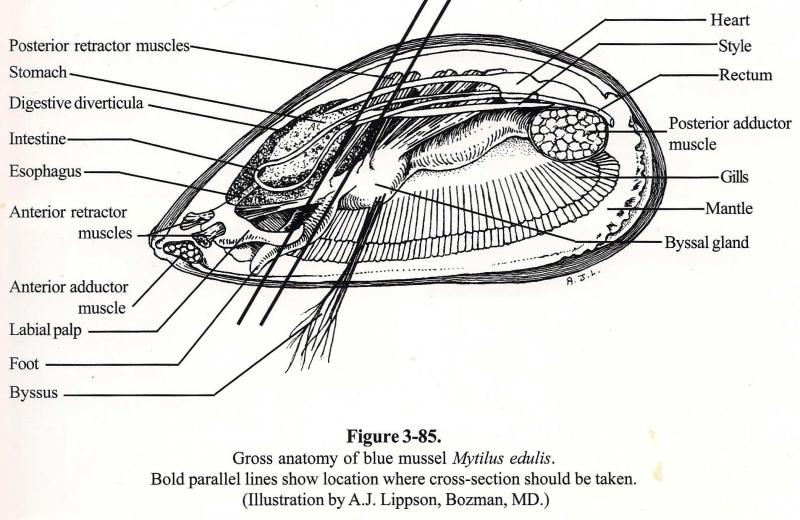
Howard DW, Lewis EJ, Keller BJ, et al. Histological Techniques for Marine Bivalve Mollusks and Crustaceans. NOAA Technical Memorandum NOS NCCOS 5. Washington, DC: National Oceanic and Atmospheric Administration; 2004.
Crustacean Species of Interest
Include the American lobster (Homarus americanus) and various crab species

American Lobster, Homarus americanus
Common name: American lobster
Latin name: Homarus americanus
Average Lifespan: 60 years+ (not easily studied, so exact numbers are unknown)1
Habitat: Rocky and sandy ocean bottoms [with ample places to burrow and hide]1
Diet: Scavenger, fish, crabs, clams, and more1,2
Geographical range: Canada to North Carolina1
Salinity and Temperature range: Cool to cold temperate waters5
General Information: Molt many times throughout their life, growing 10-15% each time.3 These animals are cannibalistic in human care, and are difficult to raise in large groups.3,4 American Lobsters are nocturnal.2 Lobsters are usually a mottled brown/green/blue, but can be many different colors in the wild depending on genetic mutations (orange, blue, calico, white).4

Blue Crab, Callinectes sapidus
Common name: Blue Crab
Latin name: Callinectes sapidus
Average Lifespan: 2 to 3 years3
Habitat: Coastal, bottom dwelling 1,4
Diet: Crabs, oysters, mussels, and other small animals1
Geographical range: Nova Scotia to Argentina, mostly found in Cape Cod. 3
Salinity and Temperature range: Wide range of salinity (larvae are best at 20ppt), 15 to 30 °C3
General Information: Females only reproduce once, and will brood their eggs.3 If they lose a limb, they can regrow it within two molting periods.
Ornamental Fish
The ADL is interested in a wide variety of ornamental fin fish

Fishes that are kept in home aquariums, or for aesthetic purposes are considered ornamental fish. These fishes encompass a wide variety of species, of many shapes, sizes, and colors.
Ornamental fish are usually kept in tanks or other aquarium systems. Water quality is extremely important in aquaculture, because the fish are dependent on the caretaker for their health.
Diagnostic services are offered on a case-by-case basis for various species of ornamental fish.

Marine and Freshwater Finfish
Marine and Freshwater Finfish diagnostic services are provided on a case-by-case basis. Previous services have included gross and internal examinations of fish that have washed up dead on beaches, and moribund or dead fish from aquaculture facilities. Also, abnormal, large-scale die-offs are a topic of interest.

Some of the species investigated include striped bass, bluefish, trout, salmon, and largemouth bass. Most of these fishes are commonly aquacultured to stock fishing ponds.
Yellowtail Flounder
Common name: Yellowtail Flounder
Latin Name: Limanda ferruginea
Average Lifespan: In the wild they can live up to 12 years1
Habitat: Sandy bottom or a mix of sand and mud1, 2
Diet: Feeds on crabs, clams, worms, and sometimes (rarely) fish2
Geographical range: North American Atlantic coast, from northern Newfoundland to southern New England. 2
Salinity and Temperature range: Wide range of temperatures but most often in 2˚-14˚C. Can subsist in salinity from 30-36ppt, preferring 32-33ppt.1
General Information: This flounder is a right-eyed species, meaning its left eye migrated to its right side as it matured.3 Currently, Yellowtail Flounder is considered a vulnerable species by the IUCN.4 They are in high demand in commercial fish markets.2